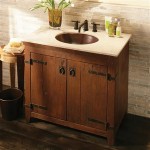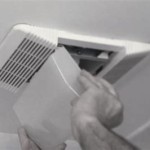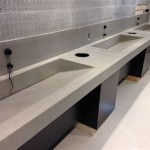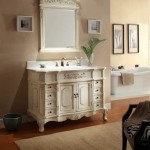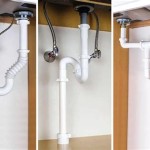How to Prevent Drain Flies in the Bathroom
Drain flies, also known as moth flies, sewer gnats, or filter flies, are small, fuzzy insects that are frequently encountered in bathrooms and kitchens. They are not only aesthetically unappealing, but their presence can also indicate unsanitary conditions within the plumbing system. While they don't bite or transmit diseases directly, their emergence from drains signifies the accumulation of organic matter, providing a breeding ground for bacteria and potentially contributing to unpleasant odors. Therefore, understanding the lifecycle of drain flies and implementing effective preventative measures is crucial for maintaining a hygienic and comfortable bathroom environment.
The primary reason drain flies thrive in bathrooms is the accumulation of organic material inside drains. This material, often referred to as biofilm or scum, is composed of hair, soap residue, skin cells, and other organic debris. This moist and nutrient-rich environment provides the ideal conditions for drain flies to lay their eggs and complete their lifecycle. The larvae feed on this organic matter, further contributing to its breakdown and potentially exacerbating drain blockages. Ignoring drain flies can lead to increased populations and a more persistent problem that requires more intensive cleaning and preventative strategies.
Preventing drain flies in the bathroom requires a multi-faceted approach, encompassing regular cleaning, drain maintenance, and addressing potential breeding sites. This strategy involves not only removing existing organic matter but also implementing practices that prevent its future build-up. By understanding the factors that contribute to drain fly infestations, individuals can take proactive steps to minimize their presence and maintain a cleaner, healthier bathroom.
Thorough Drain Cleaning to Eliminate Breeding Grounds
Effective drain cleaning is the cornerstone of drain fly prevention. The goal is to eliminate the organic matter that serves as a food source and breeding ground for the larvae. Several methods can be employed, ranging from simple home remedies to specialized enzymatic cleaners.
One effective approach involves using boiling water. Regularly flushing drains with boiling water can help to dislodge and dissolve the organic build-up. The high temperature of the water can also kill drain fly larvae and eggs. However, it is important to exercise caution when using boiling water, particularly with PVC pipes, as excessive heat can potentially damage the pipes. Always check the drain material before using this method. Furthermore, boiling water may not be sufficient to eliminate deeply embedded organic matter entirely, necessitating the use of more aggressive cleaning methods.
Another popular home remedy involves a mixture of baking soda, vinegar, and hot water. First, pour a cup of baking soda down the drain, followed by a cup of vinegar. The chemical reaction between the baking soda and vinegar creates a fizzing action that helps to loosen organic matter. Allow the mixture to sit in the drain for at least 30 minutes, ideally overnight, before flushing it with hot water. This method is effective for breaking down and removing minor build-up. Repeat the process as needed to achieve optimal results.
For more stubborn build-up, consider utilizing a drain snake or plumbing snake. These tools are designed to physically remove hair and other debris that may be lodged deep within the drainpipe. Insert the snake into the drain and rotate it to grab onto the obstruction. Carefully pull the snake out, removing the accumulated debris. This method is particularly effective for removing large clumps of hair that other cleaning methods may not be able to dislodge. After using a drain snake, flush the drain with hot water to remove any remaining debris.
Enzymatic drain cleaners are another valuable tool for preventing drain flies. These cleaners contain enzymes that break down organic matter without harming pipes. Follow the instructions on the product label carefully. Typically, the cleaner is poured down the drain and allowed to sit overnight before flushing with water. Enzymatic cleaners are particularly effective for maintaining clean drains and preventing future build-up. Avoid using chemical drain cleaners, like those that contain bleach, as they can damage pipes and release harmful chemicals. They are also not as effective at eliminating the organic matter that drain flies thrive on.
Regularly cleaning the drain stopper is also crucial. The drain stopper often accumulates hair, soap scum, and other debris, providing a breeding ground for drain flies just as the pipes do. Remove the stopper and thoroughly clean it with a brush and soap. Rinse it well before replacing it. This simple step can significantly reduce the number of drain flies in the bathroom.
Maintain Proper Plumbing Practices to Minimize Organic Build-Up
Beyond cleaning the drains directly, adopting proper plumbing practices can significantly reduce the accumulation of organic matter and prevent drain fly infestations. This involves being mindful of what goes down the drain and taking steps to prevent the build-up of debris.
Install drain screens or strainers in all bathroom drains. These screens catch hair, soap scum, and other debris, preventing them from entering the drainpipe and contributing to the accumulation of organic matter. Clean the screens regularly, removing any accumulated debris. This simple and inexpensive measure can significantly reduce the amount of material that enters the drain and contributes to the growth of drain flies.
Avoid pouring grease, oil, or food scraps down the drain. These substances can solidify in the drainpipe, creating a sticky residue that attracts other debris and provides a breeding ground for drain flies. Properly dispose of grease, oil, and food scraps in the trash rather than rinsing them down the drain.
Address any leaks or slow drains promptly. Leaks can create a constantly moist environment that encourages the growth of bacteria and fungi, which can further contribute to the accumulation of organic matter. Slow drains can also indicate a build-up of debris within the drainpipe, providing a breeding ground for drain flies. Repair leaks and address slow drains promptly to prevent these conditions from contributing to a drain fly infestation.
Consider the types of soap and hair products being used. Some soaps and shampoos contain ingredients that can contribute to the build-up of scum in the drainpipe. Consider switching to products that are less likely to leave a residue. Regularly flushing the drain with hot water after using these products can also help to prevent build-up.
Ensure proper ventilation in the bathroom. Moisture promotes the growth of bacteria and fungi, which can contribute to the accumulation of organic matter. Adequate ventilation helps to reduce moisture levels and create a less favorable environment for drain flies. Run the bathroom fan during and after showers and baths to remove excess moisture. Consider opening a window if weather permits. Proper ventilation not only helps to prevent drain flies but also reduces the risk of mold and mildew growth.
Identifying and Addressing Other Potential Breeding Sites
While drains are the most common breeding site for drain flies, they can also breed in other areas of the bathroom where moisture and organic matter accumulate. Identifying and addressing these potential breeding sites is crucial for preventing drain fly infestations.
Inspect the area around the toilet for leaks or condensation. Leaks can create a constantly moist environment that encourages the growth of bacteria and fungi. Condensation can also provide a source of moisture for drain flies. Repair any leaks promptly and wipe up any condensation regularly.
Check for standing water in potted plants or underneath sinks. Standing water can provide a breeding ground for drain flies. Empty and clean any standing water regularly. Ensure that potted plants have adequate drainage to prevent water from accumulating in the saucer.
Clean shower curtains and bath mats regularly. Shower curtains and bath mats can accumulate soap scum, hair, and other debris, providing a food source for drain flies. Wash shower curtains and bath mats regularly according to the manufacturer's instructions.
Inspect the grout and sealant around tiles and fixtures. Cracks or gaps in the grout or sealant can trap moisture and organic matter, providing a breeding ground for drain flies. Repair any cracks or gaps promptly to prevent these conditions from contributing to an infestation.
Regularly clean the bathroom floor, paying particular attention to areas around the drain and the toilet. These areas are prone to accumulating spilled liquids, hair, and other debris. Use a disinfectant cleaner to thoroughly clean the floor, ensuring that all organic matter is removed.
By diligently addressing these potential breeding sites in addition to implementing proper drain cleaning and plumbing practices, individuals can significantly reduce the likelihood of drain fly infestations and maintain a cleaner and healthier bathroom environment. A proactive approach that combines regular maintenance with preventative measures is essential for long-term control of drain flies.

How To Get Rid Of Drain Flies 6 Expert Tips Truly Blog

How To Get Rid Of Drain Flies 6 Expert Tips Truly Blog

Magic Salt How To Get Rid Of Drain Flies Home Remedy

4 Ways To Get Rid Of Drain Flies Wikihow

4 Ways To Get Rid Of Drain Flies Wikihow

How To Get Rid Of Drain Flies At Home

How To Get Rid Of Drain Flies Moth And Prevent An Infestation Pest Defence

4 Ways To Get Rid Of Drain Flies Wikihow

The Ultimate Guide To Getting Rid Of Drain Flies

How To Get Rid Of Drain Flies In Your Bathroom And Kitchen
Related Posts
